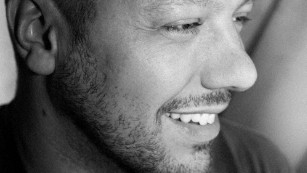Orange: The new black in Bangladesh?
(CNN) — Aristotle once said: “The aim of art is to represent not the outward appearance of things, but their inward significance.” Ernst Coppejans’ photo series “Orange Is the New Black” explores this very idea.
The photo series consists of portraits of men in Bangladesh who have dyed the hair on their heads or faces using the orange-red color produced by the flowering henna plant.
Coppejans did not travel in search of these men, however.
“I was shooting a new series in Bangladesh and I (had) to travel a lot,” Coppejans said. “From the minute I arrived, I noticed these men with orange hair, orange beards, orange mustaches, and I kept seeing them.”
Coppejans notes that the title of his photo series has nothing to do with the comedy-drama show of the same name on Netflix. Instead, it stems from the fact that each of the men photographed had chosen to participate in a sort of custom or trend in which they decided to alter the natural color of their hair.

Some Muslim men told Coppejans their decision was in reference to the Prophet Muhammad, who is believed to have dyed his hair as well. Some men had just returned from Hajj, the annual Islamic pilgrimage to Mecca. The practice of dyeing hair also generally occurs around the time of Ramadan, the Islamic holy month of fasting.
For those who did not reference religion as playing a role in their decision, Coppejans says the men took to henna for reasons of vanity. This sheds light upon the notion of how people can express their inner selves through the way in which they use the exterior of their body as a canvas.
“We all express (ourselves) by how we look — we express emotions or how we feel,” Coppejans said. “I think it’s also a status thing or something, the beards. … People kind of look up to (the men). It makes them a little bit more important, or that kind of feeling.”